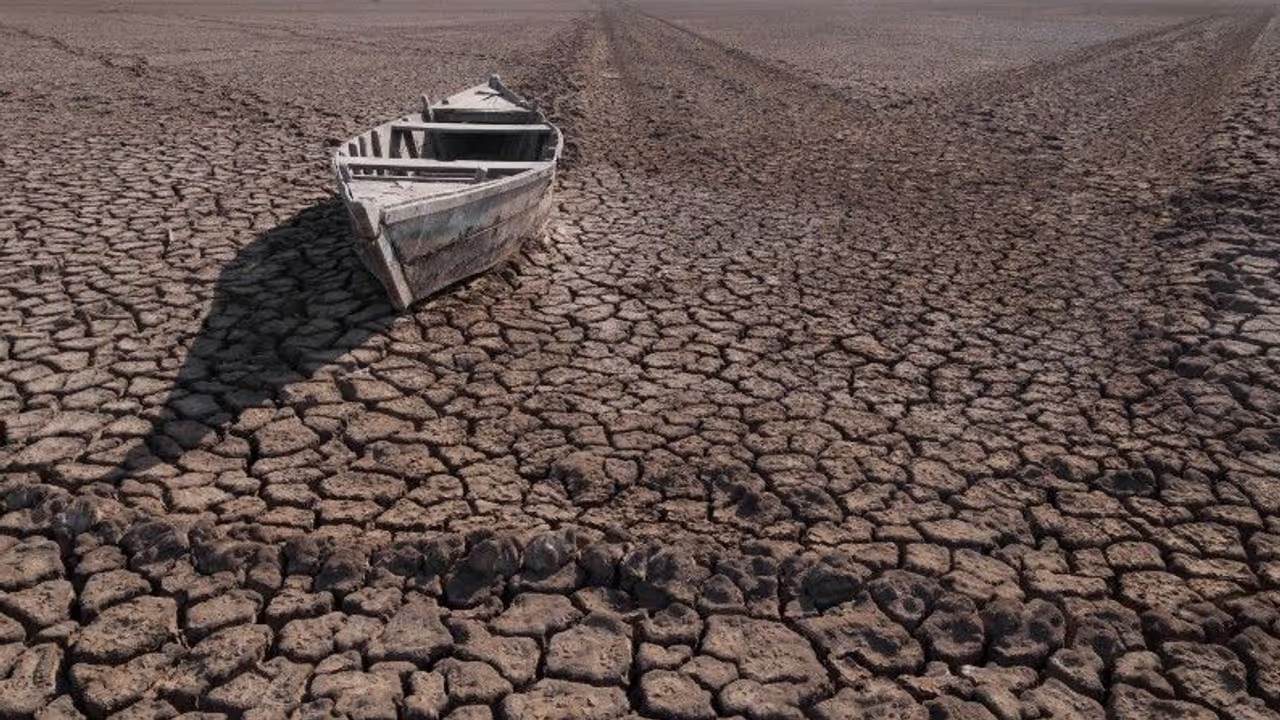A new study shows that global warming is increasing atmospheric thirst, the air’s demand for water, which now drives nearly 40% of drought severity. Even where rainfall is steady, droughts are worsening fast.
A new global study reveals a worrying truth: climate change is making the atmosphere ‘thirstier’, and that thirst is making droughts more frequent, more widespread, and more intense, even in areas where rainfall has not significantly dropped.

Published in the journal Nature, the study shows that rising atmospheric evaporative demand (AED), a measure of how much water the atmosphere draws from the land, now accounts for nearly 40% of the increase in drought severity seen between 1981 and 2022.
What is atmospheric evaporative demand (AED)?
AED describes how much water the atmosphere wants from the Earth’s surface, including from soil, rivers, lakes, and plants. As the air gets hotter, drier, sunnier, and windier due to global warming, its thirst for water increases.
Think of rainfall as income and AED as spending. Even if rainfall (your income) stays the same, an increase in AED (your spending) creates a water deficit and that leads to drought.
A growing problem even without less rain
One of the most striking findings is that drought severity is growing not just because of reduced rainfall, but because the air is pulling more moisture from the land. This means areas with stable rainfall are still drying out faster than before.
From 2018 to 2022, the global land area affected by drought expanded by 74%, and researchers say 58% of that increase was due to rising AED alone. In 2022, over 30% of the world’s land surface experienced moderate to extreme drought, the highest in four decades.
Europe and Africa hit hard
In Europe and East Africa, 2022 saw particularly severe droughts. Despite rainfall not falling sharply in some regions, intense atmospheric demand for moisture intensified drying. In Europe, reduced river flows impacted hydropower generation, crops failed due to water stress, and cities faced water shortages.
The effects were wide-ranging, disrupting agriculture, energy, water supply and threatening livelihoods. The findings make clear that rising AED can turn what would have been a mild dry spell into a major drought.
How researchers measured atmospheric thirst
The study team, led by climate scientists, used detailed global climate data, temperature, wind speed, solar radiation, and humidity to track AED. They paired this data with a drought index that combines both rainfall and AED to identify where and why droughts worsened.
They found that AED was a major driver of droughts in already-vulnerable regions such as western and eastern Africa, southwest United States, and western and southern Australia. In these places, AED explained more than 60% of drought severity in the past 20 years.
Preparing for a thirstier future
The researchers warn that most drought planning still focuses only on rainfall. But with global temperatures rising, ignoring atmospheric thirst may lead to underestimating the real drought risk.
Planning for AED-driven droughts means taking new actions: using drought-resistant crops, improving irrigation efficiency, enhancing soil moisture retention, and restoring land cover to slow water loss.
“AED must be a central part of how we monitor and prepare for droughts,” the authors say. “Knowing whether drought is caused by lack of rain or by a thirstier atmosphere helps us take the right steps to adapt.”
With climate change intensifying this invisible but powerful force, understanding and planning for a drier world is more urgent than ever.
